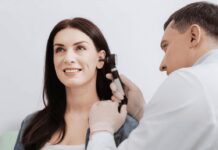Breathalyser tests are commonly used to check for alcohol in a person’s system. These simple tools play a big role during traffic stops and in workplaces where safety is important.
A breathalyser test mainly detects the amount of alcohol in someone’s breath, which helps determine if they have been drinking. Knowing what can be identified during these tests helps people understand their limits and legal responsibilities.
Recent alcohol consumption (beer, wine, spirits)
Alcohol from drinks like beer, wine, or spirits can be measured by a breathalyser. These devices look for traces of alcohol in a person’s breath to estimate the amount in their blood.
After having an alcoholic drink, alcohol enters the bloodstream and can usually be detected within minutes. The amount of time alcohol remains detectable depends on how much is consumed and a person’s metabolism.
Even one standard drink can show up on a breathalyser for a short time. People vary in how quickly their bodies process alcohol, but most will still test positive on a breathalyser after one drink for about one to two hours.
The accuracy of results depends on the device being used and when the test was taken. For those who want a more accurate breathalyser test, they can shop for testing kits made for personal or workplace use.
Blood Alcohol Concentration (BAC) level
Blood Alcohol Concentration, or BAC, is the amount of alcohol in a person’s bloodstream. It is usually shown as a percentage. For example, a BAC of 0.08% means there are 0.08 grams of alcohol per 100 millilitres of blood.
Breathalysers measure the alcohol level in the breath, which is used to estimate the BAC. The machine gives a number that helps police tell if someone has had too much to drink before driving.
Several factors can affect a person’s BAC level. These include body weight, gender, how much alcohol was consumed, and how quickly it was drunk. Even eating food can change how fast alcohol enters the blood.
Knowing your BAC level is important because the effects of alcohol become more noticeable as the level rises. A higher BAC can affect reaction time, judgment, and coordination. Different countries have their own legal BAC limits for driving.
Residual mouth alcohol affects initial readings
Residual mouth alcohol can affect the results of a breathalyser test. When someone uses mouthwash, consumes certain foods, or drinks alcohol right before taking the test, traces of alcohol can stay in the mouth. These traces may cause the device to measure mouth alcohol instead of the alcohol that is actually in the breath from the lungs.
Substances like mouthwash, cough syrup, or even some medicines can leave small amounts of alcohol in the mouth. This is known as residual mouth alcohol and can affect the accuracy of the first breathalyser reading.
Eating, drinking, or smoking shortly before the test can also lead to false readings. Burping or regurgitation can push little bits of alcohol from the stomach into the mouth, which can sometimes cause the breathalyser to record a higher result than what is present in the bloodstream.
These effects usually last only for a short time, often about 10 to 15 minutes.
Certain mouthwashes containing alcohol
Some mouthwashes contain a noticeable amount of alcohol. This is often used to help clean the mouth and kill germs. After using these products, traces of alcohol can remain in the mouth for a short period.
Breathalysers measure the alcohol present in a person’s breath. If someone uses an alcohol-based mouthwash just before taking a breath test, the leftover alcohol can affect the reading. This may lead to a higher result, not because of drinking, but due to the mouthwash.
Research shows that the alcohol from mouthwash generally disappears from the breath within 10 to 15 minutes. However, if the test is done right after rinsing, the result might not reflect the actual level of alcohol in the blood.
Waiting for a short time after using these products can help provide a more accurate result. This highlights the importance of timing when using mouthwash before a breathalyser test.
Medical conditions influencing breath alcohol
Certain health problems can affect what shows up on a breathalyser test. For example, people with acid reflux may have extra alcohol in their mouth, which can mix with their breath and lead to higher readings. This is not always due to drinking but because of the way acid reflux brings up stomach contents.
Asthma and some lung diseases may also make it hard for a person to blow steadily into the breathalyser. If someone takes medication or uses an inhaler, this can sometimes cause chemicals to show up during a test.
There are rare conditions that cause the body to produce alcohol naturally. These can lead to a person appearing over the limit even if they have not drunk alcohol. Some problems with blood sugar or the digestive system may cause this to happen.
Health issues like these should be considered when looking at breath test results. Mistakes can happen if the influence of medical conditions is not understood.
Conclusion
Breathalyser tests detect the amount of alcohol present in a person’s breath, which relates to the blood alcohol concentration in their body. Results are influenced by a range of factors, such as recent drinking, personal metabolism, and even physical activity levels.
The device does not measure other substances or detect drug use. Breathalysers focus only on alcohol levels and provide a snapshot of whether someone is over the legal limit at that time.
These tests are widely used because they offer quick and convenient results. Accuracy can vary depending on health, exercise, or how the test is taken.






